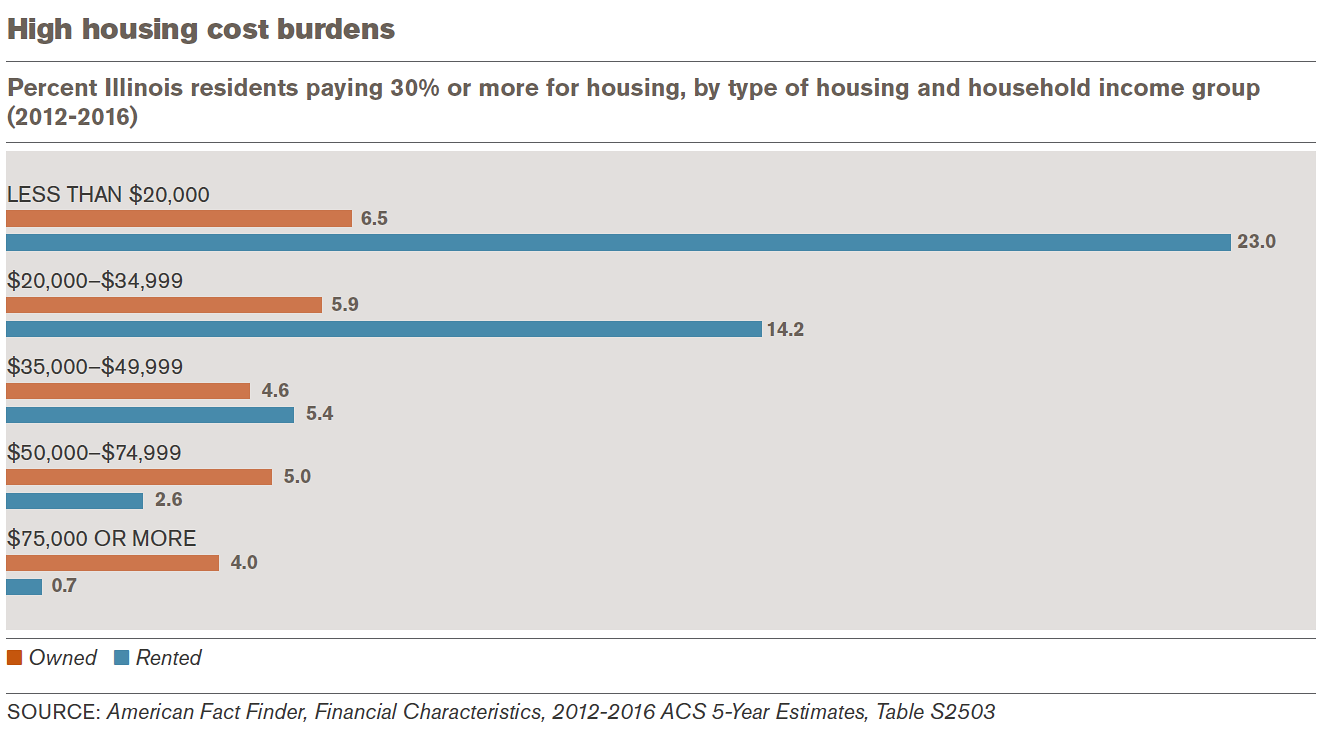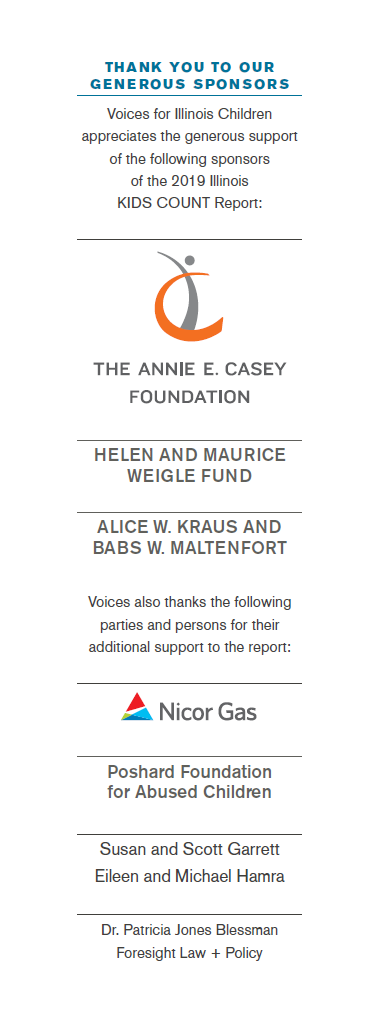Voices for Illinois Children has released its 2019 Illinois KIDS COUNT Report. The report shows significant racial and ethnic disparities in economic status, education, health, and housing for Illinois children.  The comprehensive report, which also reviews the data by county, illustrates the need to increase access to services and programs to improve the lives of all Illinois children. Among the findings: Socioeconomics - In 2016, child poverty in Illinois was at 17.8 percent. However, 38 percent of black children and 24 percent of Latinx children lived in poverty, while white and Asian children lived in poverty each at a rate of 10 percent.
- The median family income in 2016 was nearly $74,000. Black median family income and Latinx family income was about $43,000 and $50,000, respectively.
Health - Black infant mortality in 2016 was 12.9 per 1,000 births, more than twice that of the state rate (6.3). No other racial/ethnic group exceeded the state rate.
- The maternal mortality rate in Illinois is 49 per 100,000 births; the rate for black women was 109 per 100,000 births.
Housing: - In 2016, 48 percent of black children lived in households with a high housing cost burden versus 41 percent of Latinx children, and 21 percent of white children.
Housing in Illinois is highly racially/ethnically segregated, and children of color live in households that are overburdened by housing costs far more frequently than white children.

Considering Illinois’ shifting racial and ethnic demographics, addressing these disparities should be of utmost importance to all Illinoisans. From 2000 to 2016, the proportion of Latinx and Asian children increased from 17 to 25 percent and from three to five percent, respectively (a net increase of over 207,000 Latinx and Asian children). At the same time, the proportion of white children within the state’s population decreased from 59 to 52 percent and the proportion of black children decreased from 19 to 15 percent; this represented a total loss of almost 568,000 white and black children. Overall, from 2000 to 2016, the number of Illinois children decreased by over 315,000. The report also shows that there are significant disparities by geographic region: - Counties throughout the state struggle with child poverty. However, the counties with the highest rates of child poverty tend to be in the southern half of the state.
- Counties with the highest rates of public/charter school student homelessness are clustered in the southern third of the state.
- Only one county in the state (Macon) saw a significant increase in labor force participation from 2007-2011 to 2012-2016 (1.5%).
- Counties throughout the state still face significant levels of racial/ethnic residential segregation.
The 2019 Illinois KIDS COUNT Report also contains 14 recommendations to address some of the issues it outlines, including ensuring that the recent increase to a $15 minimum wage keeps up with inflation, increasing funding to school districts using the evidence-based funding formula, providing training to doctors so that they better understand the social causes of health inequalities, and encouraging counties and municipalities to increase the stock of affordable housing. About Voices for Illinois Children Voices for Illinois Children champions the full development of every child in Illinois to assure the future well-being of everyone in the state. We work with families, communities and policymakers across multiple issue areas to help children grow up healthy, happy, safe, loved and well-educated. To access a PDF of the 2019 Illinois KIDS COUNT Report, as well as county fact sheets for all 102 of Illinois’ counties, visit www.voices4kids.org.  |